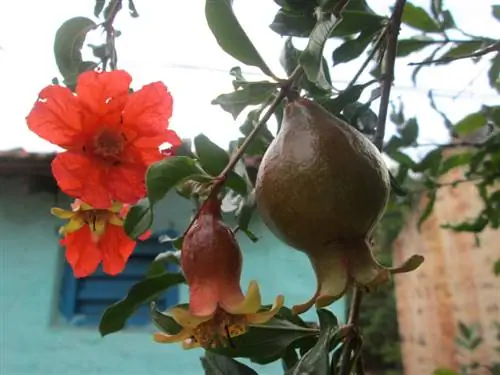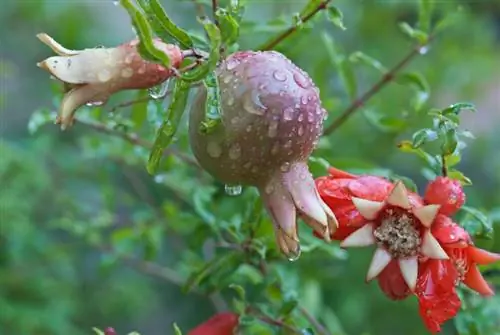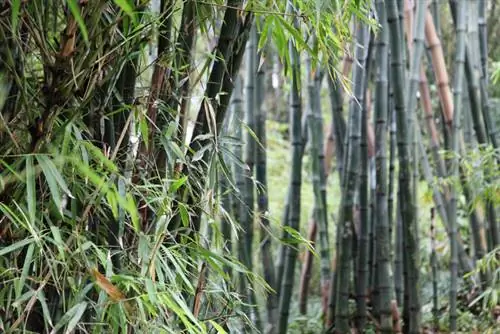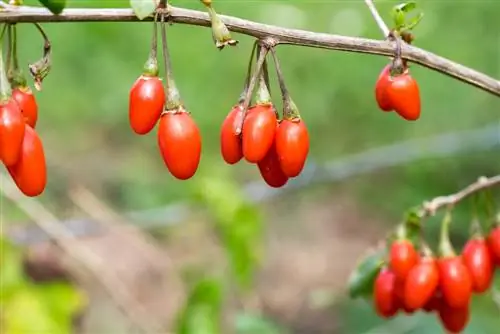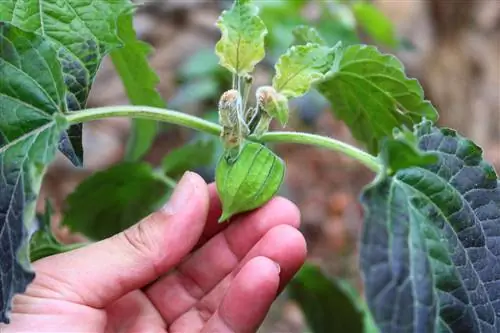- Author admin [email protected].
- Public 2023-12-16 16:46.
- Last modified 2025-01-23 11:20.
Pomegranates are grown from Turkey to the former Soviet republics such as Armenia and Georgia to Iran, China and Indonesia. But pomegranate trees can also bear flowers and fruit in the warmer regions of Germany.

Can you grow pomegranates in Germany?
In Germany, pomegranate trees can be grown in containers or outdoors in mild climate regions, such as the wine-growing region. Protected southern walls promote fruit ripening, while robust varieties such as Uzbek, Provence or Salavatski survive periods of frost better.
The botanical name of the pomegranate tree is Punica granatum. It is a three to five meter tall tree that can grow very old. The small-sized cultivar Punica granatum Nana is also widespread in Europe. The dwarf pomegranate tree is a shrub about one meter small. Both trees have orange-red, funnel-shaped flowers in spring and shed their leaves in autumn.
Pomegranate as a container plant
This exotic fruit is more commonly associated with warm climates in Asia, the Mediterranean and India. In most regions of Germany, pomegranates are grown as ornamental trees because of their beautiful flowers and leaves. Because of their sensitivity to frost, they are mainly kept in pots and, after dropping the leaves in autumn, they are brought to a cool and frost-free place to overwinter.
The pomegranate tree requires a dark winter quarters with temperatures between 2° and 7°C, where it hibernates until February. During winter rest it is watered very little and not fertilized. Between February and May it can slowly get used to being outdoors in a warmer and brighter place, where it can be placed after the Ice Saints.
Pomegranate in the open field
In the regions of Germany with a milder climate, where wine is also grown, planting pomegranate trees outdoors is conceivable, e.g. B. on a protected south wall of a building. There it is also possible for the trees to bear fruit and for them to receive enough sun to ripen. Essentially, the harvest depends on whether the summer is warm enough and dry.
Permafrost periods are not tolerated well by pomegranate trees. Among other things, frost sensitivity depends on the variety. There are quite robust varieties that can survive the winter outdoors with some protection from the cold:
- Uzbek
- Provence
- Gabes
- Tirol
- Salavatski
- Russian 26
- Katake
- Kaj Acik Anor
- Entekhabi Saveh
Tips & Tricks
The pomegranates are harvested from October until the first frost. The fruits do not ripen, so only harvest ripe fruits. These can be recognized by the orange-red, cracked shell.

